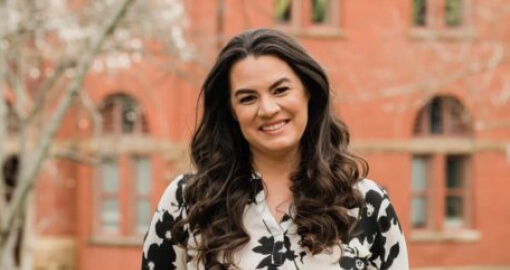Written by Shannon,
Brightside Health
6 Minute Read

Medically reviewed by:
Erin O'Callaghan, PHD
Director of Therapy
10 Minute Read

Bipolar disorder is a complex condition. It can sometimes be challenging to understand the difference between bipolar I and bipolar II, or between these and other related disorders.
To help, we’ve created this guide. We’ll look at what bipolar disorder is and how a mental health practitioner distinguishes between bipolar I vs bipolar II.
Before we get too much further, it’s important to remind you that only a licensed mental health care provider can accurately diagnose people with bipolar disorder or any other mental health condition. While our guide can give you some helpful information, you will need to see a licensed professional for medical advice, diagnosis, or treatment.
It’s also incredibly important to remind you that if you are experiencing symptoms of bipolar disorder that are causing emotional distress or if you are thinking about hurting yourself, please make use of the resources listed below.
What is bipolar disorder?
Generally speaking, bipolar disorder is a mental health condition associated with extreme mood swings. Those with bipolar disorder experience episodes of mania (elevated moods and emotional highs), and depressive episodes (emotional lows and depressed moods).
The Mayo Clinic describes these swings:
When you become depressed, you may feel sad or hopeless and lose interest or pleasure in most activities. When your mood shifts to mania or hypomania (less extreme than mania), you may feel euphoric, full of energy, or unusually irritable. These mood swings can affect sleep, energy, activity, judgment, behavior, and the ability to think clearly.
Some people who are diagnosed with bipolar disorder may experience these swings only occasionally, while others may experience mood swings multiple times a year.
Manic symptoms can include:
- Decreased need for sleep
- Feeling jumpy or wired
- Feeling unusually important or powerful
- Feeling like you can do multiple things at once
- Irritability
- Loss of appetite
- Poor judgment or taking unnecessary risks
- Racing thoughts
- Talking fast about many different things
Symptoms of bipolar depressive episodes can include:
- Difficulty concentrating
- Eating more than usual
- Fatigue
- Feeling bad about yourself
- Feeling hopeless, worthless, or helpless
- Little interest in activities you usually enjoy
- Restlessness
- Sleeping too much or too little
- Suicidal thoughts or ideas of self-harm
There are three major types of bipolar disorder and a few other types that are harder to categorize.
Types of bipolar disorder
When an individual is first diagnosed with bipolar disorder, their mental health practitioner will identify the type of disorder the individual is experiencing. It’s not uncommon to think of this identification as being a differentiation between bipolar I vs II, though there are other forms as well.
Bipolar I
Bipolar I disorder is a condition in which an individual has experienced at least one manic episode and one major depressive episode.
Bipolar I is defined by the National Institute of Mental Health as “manic episodes that last at least 7 days, or by manic symptoms that are so severe that the person needs immediate hospital care. Usually, depressive episodes occur as well, typically lasting at least 2 weeks. Episodes of depression with mixed features (having depressive symptoms and manic symptoms at the same time) are also possible.”
Of the three major types of bipolar disorder, bipolar I tends to be the most severe with full-blown manic episodes that last at least a week. It is not uncommon for these manic episodes to require hospitalization.
Bipolar II
Bipolar II disorder features the same major depressive episodes as bipolar I, but without manic episodes. Instead, those with bipolar II will experience hypomanic episodes which are shorter and less disruptive than the manic episodes described above. It’s not quite correct to think of the distinction between bipolar I vs II as “which is worse” as both disorders can disrupt your quality of life.
Cyclothymic Disorder
Individuals who are experiencing symptoms of bipolar disorders over an extended period of years or more may be diagnosed with cyclothymic disorder. This is particularly true if:
- The depressive episodes are not severe enough to be classified as “major depressive episodes”
- There are persistent mood shifts over a period of two years
- The episode shifts last for months at a time
Cyclothymic disorder is sometimes thought of as milder than bipolar I or 2, but can still be disruptive for those who experience it as the episodes tend to last much longer.
Other types of bipolar disorders
There are also unspecified bipolar-related disorders where the symptoms aren’t quite clear enough to land in one of the above categories. These may include conditions in which the mania or depression is due to another medical condition, or related to drug or alcohol use.
How is bipolar disorder treated?
Bipolar disorders, no matter the type, are generally considered to be lifelong conditions. Even so, treatment can help many people, including those with the most severe and disruptive forms.
A treatment plan for bipolar disorder generally includes a combination of therapy and medication. Medication for bipolar disorders might include mood stabilizers and second-generation antipsychotic medication.
If you think you might be experiencing the symptoms of bipolar disorder, it’s important to see a mental health provider right away. At Brightside Health, we can help.
Resources:
If you are in emotional distress or thinking about hurting yourself in any way please make use of these resources:
- Visit: If you are having a medical or mental health emergency, call 911 or go to your local emergency department
- Text: The Crisis Text Line provides 24-hour free and confidential help. Text ‘HOME’ to 741-741 to connect with a counselor immediately
- Call: You can call the 988 Suicide & Crisis Lifeline simply by dialing 988 to talk with a live counselor 24 hours per day


















